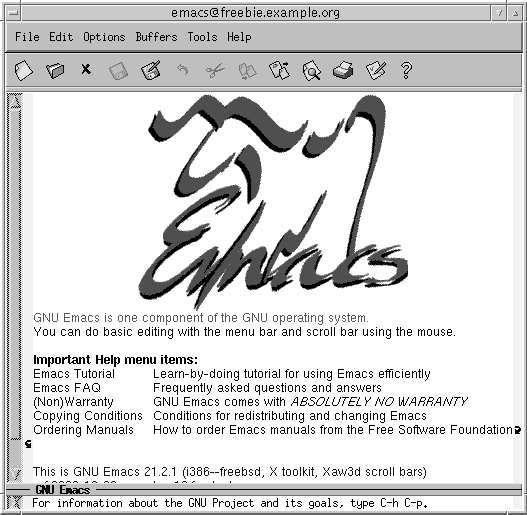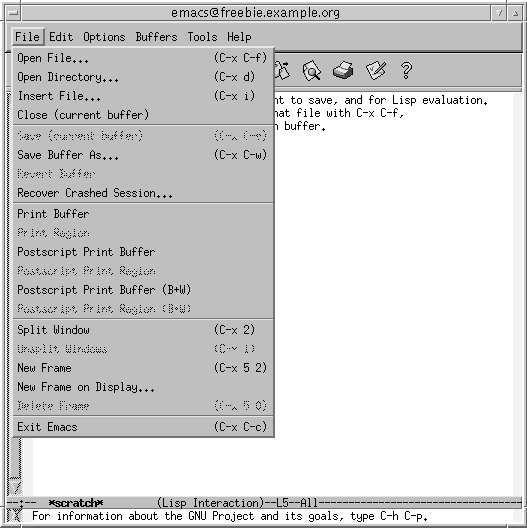| Россия |
The tools of the trade
Changing your shell
The FreeBSD installation gives root a C shell, csh.This is the traditional BSD shell, but it has a number of disadvantages: command line editing is very primitive, and the script language is significantly different from that of the Bourne shell, which is the de facto standard for shell scripts: if you stay with the C shell, you may still need to understand the Bourne shell. The latest version of the Bourne shell sh also includes some command line editing. See page 133 for details of how to enable it.
If you want to stay with a csh-like shell, you can get better command line editing with tcsh, which is also in the base system. You can get both better command line editing and Bourne shell syntax with bash, in the Ports Collection.
If you have root access, you can use vipw to change your shell, but there's a more general way: use chsh (ChangeShell). Simply run the program. It starts your favourite editor (as defined by the EDITOR environment variable). Here's an example before:
#Changing user database information for velte. Shell: /bin/csh Full Name: Jack Velte Location: Office Phone: Home Phone:
You can change anything after the colons. For example, you might change this to:
#Changing user database information for velte. Shell: /usr/local/bin/bash Full Name: Jack Velte Location: On the road Office Phone: +1-408-555-1999 Home Phone:
chsh checks and updates the password files when you save the modifications and exit the editor. The next time you login, you get the new shell. chsh tries to ensure you don't make any mistakes—or example, it won't let you enter the name of a shell that isn't mentioned in the file /etc/shells—but it's a very good idea to check the shell before logging out. You can try this with su, which you normally use to become super user:
bumble# su velte Password: su-2.00$ note the newprompt
You might hear objections to using bash as a root shell. The argument goes something like this: bash is installed in /usr/local/bin, so it's not available if you boot into single-user mode, where only the root file system is available. Even if you copy it to, say, /bin, you can't run it in single-user mode because it needs libraries in /usr/lib.
In fact, this isn't a problem. If you install the system the way I recommend in "Installing FreeBSD" , /usr is on the root file system. Even if it isn't, though, you don't have to use bash in single-user mode. When you boot to single-user mode, you get a prompt asking you which shell to start, and suggesting /bin/sh.
Differences from Microsoft
If you're coming from a Microsoft background, there are a few got chas that you might trip over.
Slashes: backward and forward
/ (slash) and \ (backslash) are confusing. As we've seen, UNIX uses / to delimit directories. The backslash \ is called an escape character. It has, several purposes:
- You can put it in front of another special character to say "don't interpret this character in any special way."We've seen that the shell interprets a space character as the end of a parameter. In the previous example we changed Mail rejected to "Mail rejected" to stop the shell from interpreting it. We could also have written: Mail\ rejected.
A more common use for this quoting is to tell the shell to ignore the end of a line. If acommand line in a shell script gets too long, you might like to split it up into several lines; but the shell sees the end of a line as a go-ahead to perform the command. Stop it from doing so by putting a backslash immediately before the end of the line:
$ grep \ "Mail rejected" \ /var/log/maillog
Don't put any spaces between the \ and the end of the line; otherwise the shell will interpret the first space as a parameter by itself, and then it will interpret the end of line as the end of the command.
- In the C programming language, the backslash is used to represent several control characters. For example, \n means "new line." This usage appears in many other places as well.
- Using \ as an escape character causes problems: how do we put a \ character on a line? The answer: quote it. Write \\ when you mean \. This causes particular problems when interfacing with Microsoft: if you give a Microsoft path name to a shell, it needs the doubled backslashes: C:\\WINDOWS.
Tab characters
We've seen that the shell treats "white space," either spaces or tab characters, as the same. Unfortunately, some other programs do not. make, sendmail and syslogd make a distinction between the two kinds of characters, and they all require tabs (not spaces) in certain places. This is a real nuisance, because hardly any editor makes a distinction between them.
Carriage control characters
In the olden days, the standard computer terminal was a Teletype, a kind of computer-controlled electric type writer. When the carriage, which contained the print head, got to the end of a line, it required two mechanical operations to move to the beginning of the next line: the carriage return control character told it to move the carriage back to the beginning of the line, and the line feed character told it turn the platen to the next line.
Generations of computer systems emulated this behaviour by putting both characters at the end of each text line. This makes it more difficult to recognize the end of line, it uses up more storage space, and normally it doesn't buy you much. The implementors of UNIX decided instead to use a single character, which it calls the newline character. For some reason, they chose the line feed to represent new line, though the character generated by Enter is a carriage return. As we saw a bove, the C programming language represents it as \n.
This causes problems transferring data between FreeBSD and Microsoft, and also when printings to printers that still expect both characters. We'll look at the file transfer issues on page 260 and the printer issues on page 267.
The Emacs editor
A part from the shell, your second most important tool is the editor, a program that creates and changes texts. Another divergence of concept between UNIX and Microsoft environments is that UNIX gives you a choice of editors in just about anything you do. Microsoft products frequently try to redefine the whole environment, so if you change mailers, you may also have to change the editor you use to write mail. This has a profound effect on the way you work. In particular, the Microsoft way makes it uninteresting to write a really good editor, because you can't use it all the time.
The standard BSD editor is vi, about which people speak with a mixture of admiration, awe and horror. vi is one of the oldest parts of BSD. It is a very powerful editor, but nobody would say that it is easy to learn. There are two reasons to use vi:
- If you're already an experienced vi hacker, you probably won't want to change.
- If you do a lot of work on different UNIX systems, you can rely on vi being there. It's about the only one on which you can rely.
If, on the other hand, you don't know vi, and you only work on systems whose software you can control, you probably shouldn't use vi. Emacs is much easier to learn, and it is more powerful than vi.
When running under X, Emacs displays its own window (v/' uses an xterm under these circumstances). As are sult, if you start Emacs from an xterm, you should use the & character to start it in the background:
$ emacs &
Figure 7-8 shows the resulting display. As you can see, the first thing that Emacs offers you is a tutorial. You should take it. You'll also notice the menu bars at the top. Although they look primitive compared to graphics toolbars, they offer all the functionality of graphics-oriented menus. In addition, they will tell you the keystrokes that you can use to invoke the same functions. Figure 7-9 gives an example of the Files menu.
There is a lot of documentation for Emacs, much of it on line. The complete Emacs handbook is available via the info mode of Emacs, which is described in the tutorial. If that's not enough, read Learning GNU Emacs, byDebra Cameron, Bill Rosenblatt and Eric Raymond.
Stopping the system
To stop X, press the key combination Ctrl-Alt-Backspace, which is deliberately chosen to resemble the key combination Ctrl-Alt-Delete used to reboot the machine. Ctrl-Alt-Backspace stops X and returns you to the virtual terminal in which you started it. If you run from xd/w, it reds plays a login screen.
To stop the system, use the shutdown program. To do so, you need to be a member of group operator.
By default, KDE uses the halt program. Only root can use this program, so you should reconfigure KDE to use shutdown. After this, you can shut down from KDE with the keystroke combination Ctrl-Alt-PageDown.


